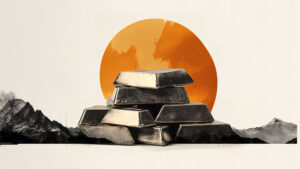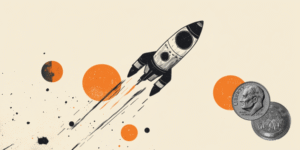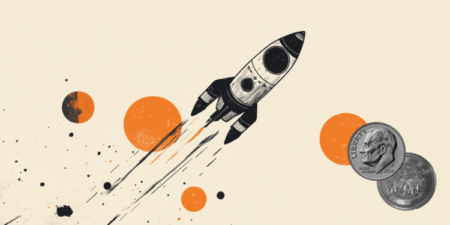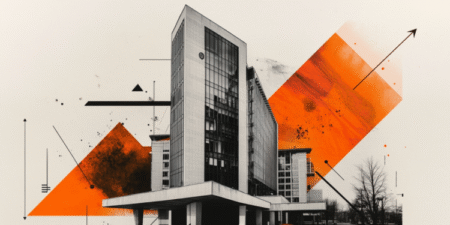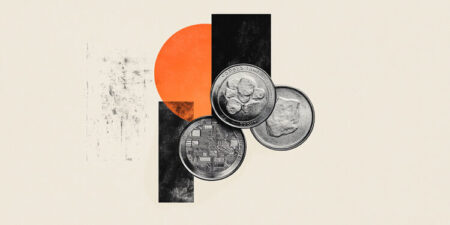When we think of an Individual Retirement Account (IRA), we often imagine a classic retirement savings plan offered by a Bank or Broker, allowing you to invest in Stocks, Bonds or Mutual Funds.
But there’s a lesser-known, far more flexible version: the Self-Directed IRA (SDIRA). This account offers savers the opportunity to invest in a diverse range of alternative assets, including Real Estate, Precious Metals, and Cryptocurrencies, while retaining the tax advantages of a Traditional or Roth IRA.
Similar operation but broader possibilities
The basic principle remains that of an IRA, you save for retirement with tax advantages.
- Traditional IRA: Tax-deductible contributions, tax-deferred earnings, but taxed on withdrawals.
- Roth IRA: After-tax contributions, but tax-free growth and withdrawals at retirement if rules are respected.
The major difference in a Self-Directed IRA lies in the type of investments permitted. Whereas a conventional IRA is limited to listed securities, an SDIRA allows you to acquire :
- Physical Real Estate (but without personal use),
- Shares in private companies or start-ups,
- Precious Metals in physical form,
- Crypto-assets,
- Private placements or loans between individuals.
The custodian’s key role
An SDIRA cannot be managed entirely on its own. By law, it must be managed by a custodian bank or specialized trustee, who hosts the account and ensures compliance with tax regulations.
Unlike a traditional Broker, this custodian does not provide investment advice, it executes transactions according to your instructions, but the selection, verification and management of assets are entirely the investor’s responsibility.
The choice of an IRA custodian is a strategic one as you need to assess its reputation, its fees (often higher than for a Traditional IRA), the asset classes it authorizes and the quality of its customer service.
Advantages of a Self-Directed IRA: Freedom and diversification
For sophisticated investors, the Self-Directed IRA offers several advantages:
- Total control over investment choices.
- Broader diversification with access to assets less correlated with Stock markets.
- Possible higher return potential if you master a specific sector.
- Unchanged tax advantages compared with conventional IRAs.
This flexibility particularly appeals to those who seek to align their investments with their skills or convictions, whether supporting local projects, betting on Gold or investing in Blockchain technology.
Disadvantages of an SDIRA: Increased complexity and risk
This freedom comes at a price:
- Higher risk of non-compliance: IRS rules are strict. A prohibited transaction (for example, buying Real Estate to house a family member) can result in immediate taxation of the entire account, with penalties.
- Lack of liquidity: Selling an alternative asset can take time, making it difficult to pay Required Minimum Distributions (RMDs) for Traditional IRA accounts.
- Higher fees: Set-up fees, annual custody fees, and sometimes specific costs depending on the investment.
- No safety net: No integrated advice, unlike a Broker who can guide you towards suitable products.
The Securities and Exchange Commission (SEC) also warns of an increased risk of fraud, with some promoters using the “SDIRA” label to give a legitimate appearance to dubious investments.
What’s the right investor profile for a Self-Directed IRA?
The Self-Directed IRA is not for everyone. It is best suited to experienced investors who are prepared to do their own research and work with independent tax or financial advisors.
For the majority of savers, a Traditional or Roth IRA offered by a reputable Bank or Broker is still sufficient to supplement the Social Security pension and build a solid retirement plan.
On the other hand, if you master a specific investment field, accept administrative complexity and seek extensive diversification, an SDIRA can become a powerful tool for optimizing your retirement planning.
IRAs FAQs
An IRA (Individual Retirement Account) allows you to make tax-deferred investments to save money and provide financial security when you retire. There are different types of IRAs, the most common being a traditional one – in which contributions may be tax-deductible – and a Roth IRA, a personal savings plan where contributions are not tax deductible but earnings and withdrawals may be tax-free. When you add money to your IRA, this can be invested in a wide range of financial products, usually a portfolio based on bonds, stocks and mutual funds.
Yes. For conventional IRAs, one can get exposure to Gold by investing in Gold-focused securities, such as ETFs. In the case of a self-directed IRA (SDIRA), which offers the possibility of investing in alternative assets, Gold and precious metals are available. In such cases, the investment is based on holding physical Gold (or any other precious metals like Silver, Platinum or Palladium). When investing in a Gold IRA, you don’t keep the physical metal, but a custodian entity does.
They are different products, both designed to help individuals save for retirement. The 401(k) is sponsored by employers and is built by deducting contributions directly from the paycheck, which are usually matched by the employer. Decisions on investment are very limited. An IRA, meanwhile, is a plan that an individual opens with a financial institution and offers more investment options. Both systems are quite similar in terms of taxation as contributions are either made pre-tax or are tax-deductible. You don’t have to choose one or the other: even if you have a 401(k) plan, you may be able to put extra money aside in an IRA
The US Internal Revenue Service (IRS) doesn’t specifically give any requirements regarding minimum contributions to start and deposit in an IRA (it does, however, for conversions and withdrawals). Still, some brokers may require a minimum amount depending on the funds you would like to invest in. On the other hand, the IRS establishes a maximum amount that an individual can contribute to their IRA each year.
Investment volatility is an inherent risk to any portfolio, including an IRA. The more traditional IRAs – based on a portfolio made of stocks, bonds, or mutual funds – is subject to market fluctuations and can lead to potential losses over time. Having said that, IRAs are long-term investments (even over decades), and markets tend to rise beyond short-term corrections. Still, every investor should consider their risk tolerance and choose a portfolio that suits it. Stocks tend to be more volatile than bonds, and assets available in certain self-directed IRAs, such as precious metals or cryptocurrencies, can face extremely high volatility. Diversifying your IRA investments across asset classes, sectors and geographic regions is one way to protect it against market fluctuations that could threaten its health.
Read the full article here




